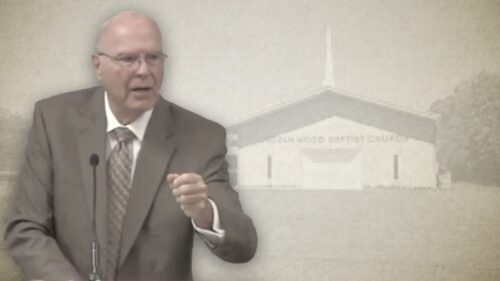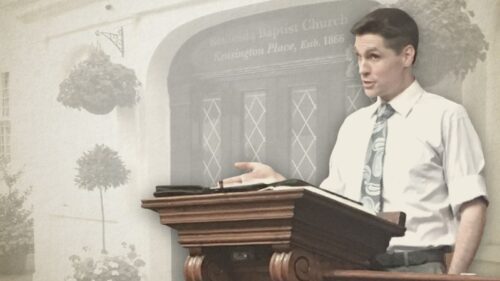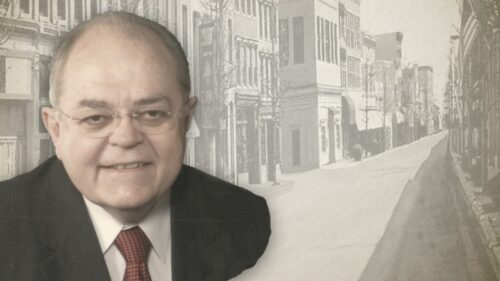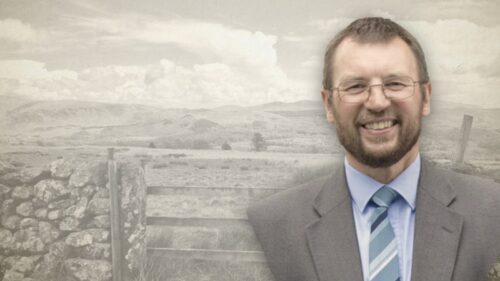-
Gill’s “Body Of Divinity” And The Table Of Contents Rearranged
The Framework of Sovereign Grace is a diagram designed to illustrate God's masterplan for the ages. The content of John Gill's systematic theology fits within this context. In this study, the Table of Contents has been rearranged in order to demonstrate this alignment.
-
40 Bible Doctrine – Gill’s ‘Body Of Divinity’ And The Table Of Contents
I would like to welcome you back to another study in Bible Doctrine. We are looking in this study, at the table of contents belonging to John Gill’s ‘Body of Divinity’. Allow me to introduce the subject by referring you to the passage of Scripture read at the opening of our worship hour. When the Apostle Paul called together the gospel preachers who were ministering at Ephesus, it was the last time he would see them face to face, and therefore he took opportunity to give some apostolic instructions and pastoral counsels to the men. By way of example, and for the purpose of encouragement, he told them in...
-
Gill’s “Body Of Divinity” And The Table Of Contents
A grounding in the faith, requiring a knowledge and understanding of the whole counsel of God, should be the desire and aim of every regenerate sinner. Before going into the details of John Gill’s Body of Divinity, it is helpful to gain an overview of the branches and stems of systematic theology. This is easily accomplished by examining the table of contents annexed to Gill’s Divinity.
-
39 Bible Doctrine – The Key To Unlocking John Gill’s ‘Body Of Divinity’
I would like to welcome you back to another study in Bible Doctrine. In our previous studies, I have introduced the life, legacy and writings of John Gill. Out of the twenty-five works highlighted, there are four which I have recommended every Christian should own and read: 1. “The Cause of God and Truth” (1735-38) 2. “An Exposition of the Old and New Testaments” (1746-48; 1763-66) 3. “Goat Yard Declaration of Faith” (1729) 4. “A Body of Doctrinal and Practical Divinity” (1769-70) Having given some background, explanations and samples of the first three works, I now come to the last—A Body of Doctrinal and Practical Divinity. Another term for ‘body’ is system, and another term for ‘divinity’ is theology. Henceforth, this is John Gill’s System…
-
The Key To Unlocking John Gill’s “Body Of Doctrinal And Practical Divinity”
John Gill understood the Sublapsarian view on the logical order of God's decree to fit within the Supralapsarian view, thereby subscribing to both positions. This scheme of teaching is diagramed in the "Framework of Sovereign Grace", which serves as the key to unlocking Gill's "Body of Doctrinal and Practical Divinity" (Systematic Theology). Although Gill himself never diagramed his framework of teachings, it was a method used by William Perkins (a Supralapsarian) and by John Bunyan (a Sublapsarian) during the 16th and 17th centuries. The "Framework of Sovereign Grace" is a diagram drawn up by Jared Smith in 2012, incidentally but conveniently aligned with the teachings of John Gill.
-
38 Bible Doctrine – Confessional Statements And Their Proper Use
I would like to welcome you back to another study in Bible Doctrine. In our previous two studies, I have given a historic and doctrinal overview of John Gill’s Goat Yard Declaration of Faith. And then, towards the end of our last study, I pointed out some of the major differences between the 1689 Confession and the 1729 Declaration. In a nutshell, the 1689 Confession is representative of 17th century Hyper-Calvinism, whereas the 1729 Declaration is representative of 18th century Hyper-Calvinism. More specifically, 17th century Hyper-Calvinism, represented by the 1689 Confession, is based on a threefold covenantal framework, pushing to the forefront a conditional covenant of grace. Forthwith, saving faith is viewed as a legal duty imposed upon unregenerate sinners, resulting in a conditional salvation;…





